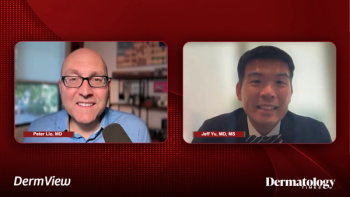
Enhancing the Patient Experience With Topical Psoriasis Treatments
Panelists discuss how roflumilast foam, though newly approved for scalp psoriasis, is already showing promise off-label for conditions such as seborrheic dermatitis and nail psoriasis, thanks to its well-tolerated, alcohol- and propylene glycol–free vehicle that improves patient comfort, adherence, and expands topical options for difficult-to-treat areas—potentially reducing reliance on systemic therapies.
Episodes in this series

Although roflumilast foam was only recently approved for scalp psoriasis, clinicians have already been using it off-label with success for seborrheic dermatitis and overlapping scalp conditions, including “sebopsoriasis.” Many patients with mixed inflammatory scalp diseases have responded well, and the foam has even allowed some to delay or avoid systemic therapy. This makes it a valuable option for patients who are either not ready for systemic treatments or who want to reduce their systemic load, especially if they’re doing well systemically but are still struggling with scalp symptoms.
A major differentiator of roflumilast foam is its vehicle formulation, which avoids common irritants such as propylene glycol, a known allergen and irritant frequently found in topicals—even some newer nonsteroidals. The foam’s alcohol-free, hydrating design enhances both tolerability and patient satisfaction. Importantly, tolerability data from trials showed close alignment between investigator assessments and patient-reported experiences, highlighting that it truly is well tolerated in real-world use. The focus on patient experience—comfort, ease of application, minimal disruption to hair care routines—makes the foam stand out in a space where adherence often suffers.
Beyond the scalp, the foam is being explored informally for nail psoriasis and other hard-to-treat areas. Early anecdotal data, including a small Canadian study, suggests potential efficacy in nail disease, an area where topicals rarely succeed. Although not yet approved for this use, its safety profile and versatility make it a reasonable option to try, especially for patients with localized disease or cosmetic concerns. Ultimately, roflumilast foam is shifting the treatment paradigm by enabling clinicians to better manage high-impact, difficult-to-treat sites such as the scalp and nails without resorting to systemic switches, reducing cost, administrative burden, and therapeutic burnout across the board.
Newsletter
Like what you’re reading? Subscribe to Dermatology Times for weekly updates on therapies, innovations, and real-world practice tips.















